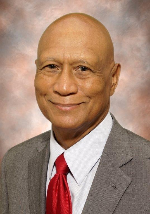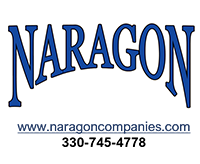
The Rotary Club of Akron had one of our own members, Malcolm J. Costa, as our featured speaker during our Tuesday, August 16th meeting. Malcolm has devoted his life to community service: organizing communities, developing programs and people to address poverty in Akron and Northeast Ohio.
For the past 45 years, Malcolm has served as President & CEO, Community Action Akron Summit where he administers community programs most notably as the prime Summit County contractor for the Community Services Block Grant.
 Malcolm shared with the Club some of the programs offered by his agency. In addition, he presented information on the impact the construction of the Akron Innerbelt had on the African American Community in the 1960’s.
Malcolm shared with the Club some of the programs offered by his agency. In addition, he presented information on the impact the construction of the Akron Innerbelt had on the African American Community in the 1960’s. View the PowerPoint Slides (not all slides were visible in the recorded presentation)
What is Community Action Akron Summit?
Community Action Akron Summit (CA) is a private, non-profit corporation dedicated to providing a wide range of diverse and comprehensive services for over 40 years that address the needs of low-income residents of Summit County.
The concept of Community Action has been part of the American social fabric for 50 years. The Community Action movement dates back to 1964, when the Economic Opportunity Act was passed indicating the beginning of President Lyndon B. Johnson’s War on Poverty.
CA offers specific resources and educational training that promote economic self-sufficiency to low-income residents while assisting individuals and families to move upwards and out of poverty by providing a comprehensive system of education, training, support, and resources that are central to the programs and services offered.
What are some of those programs and services?
- Pathways HUB Community Action Program
Represents a network of care coordination agencies focused on reaching pregnant women at risk and reduction of infant mortality.
- Head Start Program
Provides high-quality early childhood education in nurturing learning environments for infant toddlers and 3 year-olds.
- Foster Grandparent Program
Provides volunteer opportunities for low-income people aged 55 and older to serve children and teenagers who have special needs.
- Energy Assistance Program
Assists low-income households that are threatened with the loss of basic utilities.
- Earned Income Tax Credit Program
No cost income tax preparation service for low- and moderate-income families.
- Chore Program
No cost snow removal and grass cutting service for eligible low-income families.
How Did the Construction of the Akron Innerbelt in the 1960’s Impact the African American Community?
Just as Community Action Agencies were created in 1964 by the Economic Opportunity Act, legislation to create Urban Renewal was also passed.
- The mass exodus to suburbia after World War II left many major cities in poor condition.
- Affordable, dependable housing was hard to find, especially for the poor.
- To deal with escalating problems in urban areas, Johnson won passage of a bill establishing a Department of Housing and Urban Development.
With the creation of the Department of Housing and Urban Development, the City of Akron began to look at constructing the Innerbelt. The decision to construct the Innerbelt impacted large segments of homes and businesses from West Cedar Street to the northeast, to Wooster Avenue to the South. These businesses and homes were occupied predominantly by African Americans.
The Akron Beacon Journal printed an article titled “The Devastation -The failed Akron Innerbelt drove decades of racial inequity” on February 3, 2022. Malcolm shared some of the highlights from that article.
- The Akron Innerbelt tore through a Black neighborhood, destroying property values and hurting the people who lived there.
- Black families that had worked hard to buy houses — long the standard for accruing and passing on generational wealth — lost them overnight.
- Many became renters and entered public housing developments. Some were able to purchase homes in other parts of the city, though white flight followed them. Those who kept their homes also lost, as declining property values prevented them from being able to build equity.
- With so many families leaving the neighborhood, school enrollment also declined, which led to school closures, further depreciating home values.
- A 1975 document compiled by the Akron Department of Planning and Urban Renewal notes that at least 737 households were displaced during the highway’s first two phases of construction. But that figure does not account for two later phases lasting until 1987, and former city employees, displaced residents, advocates, and local historians believe the number is higher.
- To make way for the Innerbelt in the late 1960s, city officials had been seizing property through eminent domain and offering a small amount of cash to homeowners for relocation purposes. The payouts, which frequently were contested by homeowners, were often not enough to purchase new homes.
- In the late 1960s and early 1970s, the city was offering about $5,000 to each homeowner, though on rare occasions payments were as high as $15,000.
You can view the PowerPoint slides that Malcolm shared with the Club that shows some of the areas that were impacted by the decision to create the innerbelt and the resultant decades of racial inequity.
To learn more about Community Action Akron-Summit and the programs and services offered, I encourage you to visit www.ca-akron.org.



